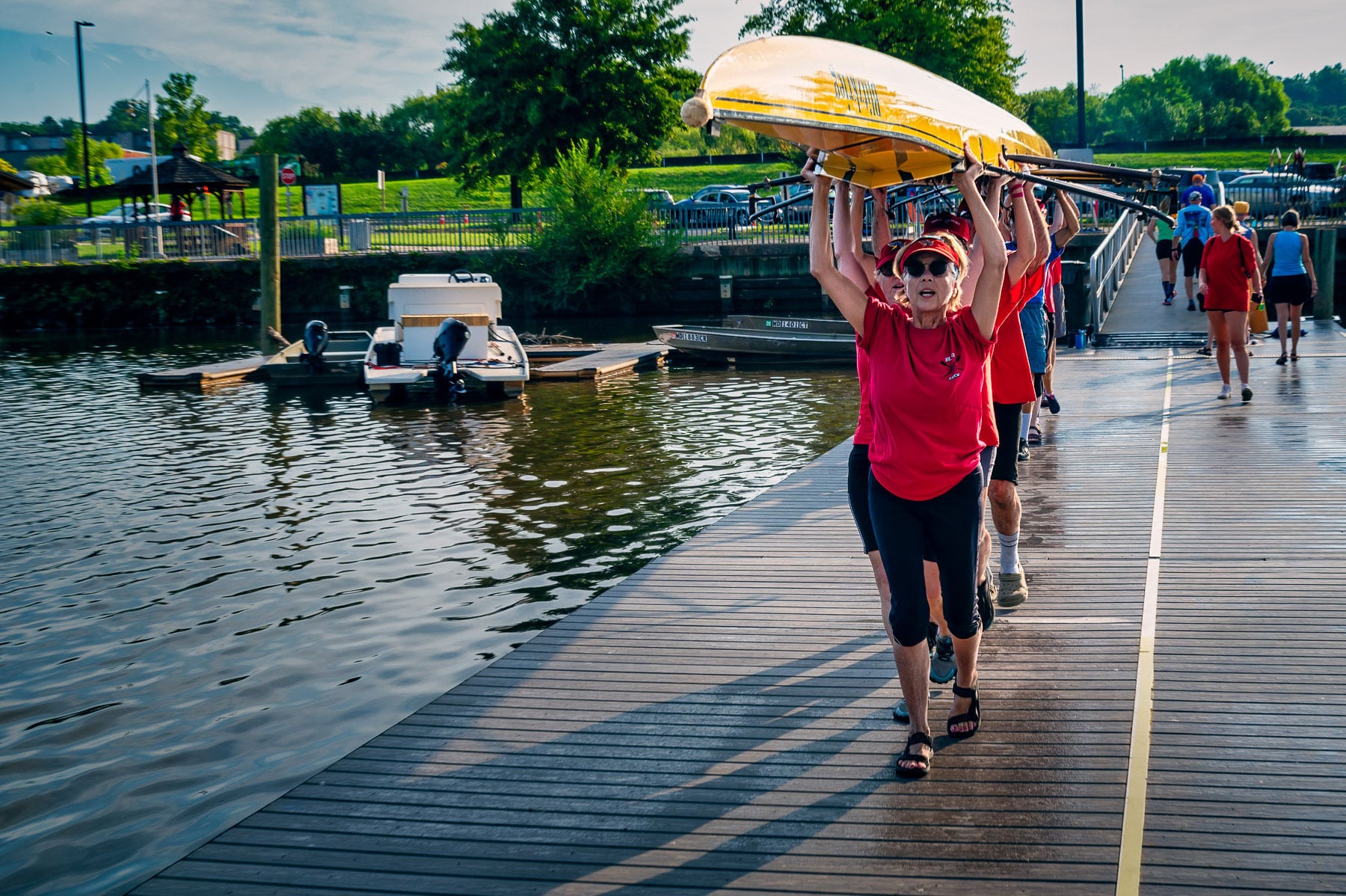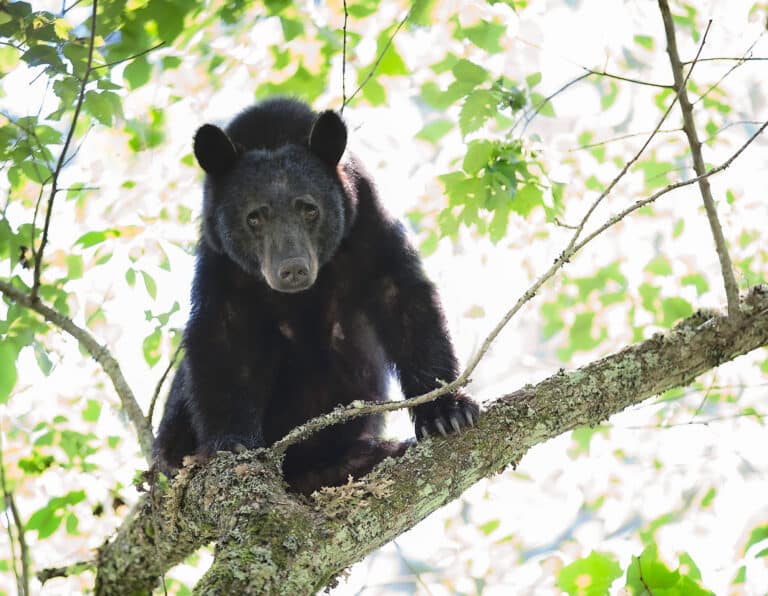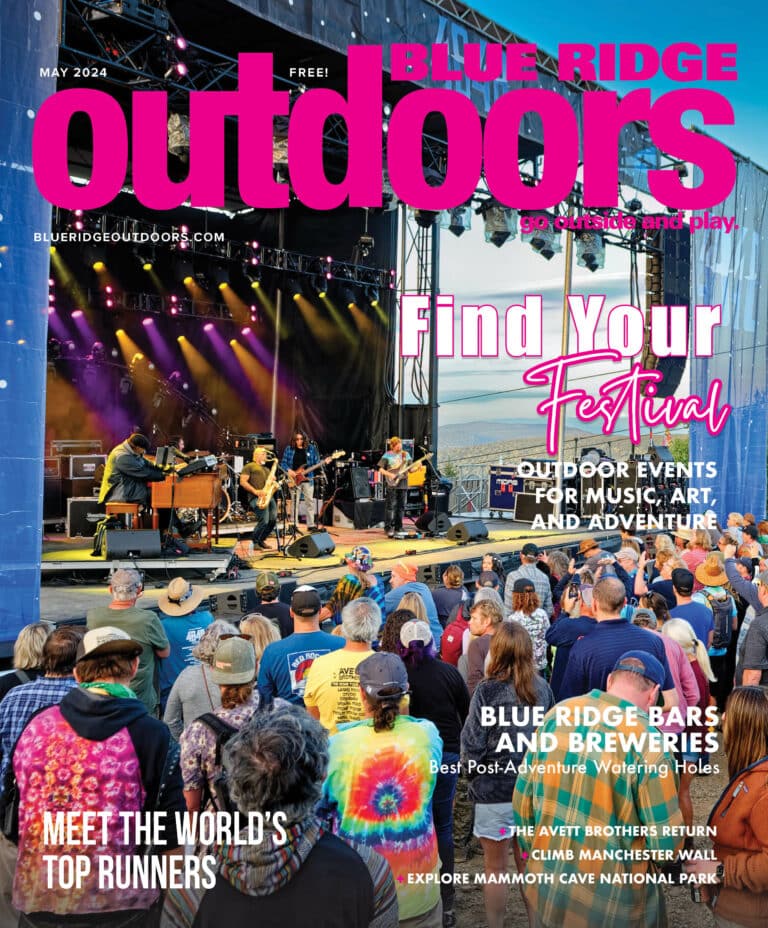A once-forgotten waterway flowing through the nation’s capital is now bringing communities together to help save it.
On most weekends at the historic Langston Golf Course in Washington, D.C., golf carts putter along while people swiftly swing their clubs. But on a Saturday this past May, eager volunteers gathered near the course’s 17th hole, laughing as they learned to use hand saws and machetes. They were removing a dense thicket of shrubs known as bush honeysuckle, clearing space for native plants critical for removing pollutants from soil and restoring the health of the nearby Anacostia River.
Among the volunteers, working with the Anacostia Watershed Society (AWS), are Kristina Vidal and her daughter Hazel Wartchow, who, for the past few years, have been helping the group remove invasive species.
Members of AWS have undertaken habitat renewal work since the organization was founded in 1989, with a focus on having people from diverse backgrounds engage with the river. This community engagement is critical to improving water quality and fostering a sense of ownership of and investment in the river’s health, according to AWS officials. And getting the community involved is an essential part of efforts to make the river—once in deep environmental peril—swimmable and fishable for the first time in decades.
“By providing opportunities for people to learn about the river, enjoy it, and work to restore it, local groups are promoting a sense of community stewardship that is vital to bringing the river back to health,” says Chris Williams, president of AWS.
For Hazel and her sister, Sola Wartchow, what started as time spent fulfilling community service hours has become a family affair that also includes Vidal’s husband, Rick Wartchow, who frequently volunteers for AWS. It is an opportunity to spend time together and a chance to make a difference in their community. Removing invasive plants, monitoring freshwater mussels, and conducting litter cleanups ensure the Anacostia River, which flows through the nation’s capital for a little more than eight miles from Prince George’s County in Maryland to the Potomac, is preserved for everyone living along the waterway.
“Volunteering is very satisfying because each activity has a specific goal, and you can see immediate, tangible results from your efforts towards restoring the river,” says Vidal.

While groups like AWS are working to restore the river through volunteerism, other community groups take a more social approach. For Defensores De La Cuenca (“defenders of the watershed”), the focus is on bringing families in the Latino community together to enjoy outdoor activities.
Defensores De La Cuenca offers family fishing days on the river, often welcoming attendees who have never cast a fishing rod. The group invites environmental and watershed professionals to their events so children can learn about potential careers in environmental protection. They hope these interactions will instill in the next generation an appreciation for the importance of protecting the river.
“We don’t prescribe a particular experience, but our approach is family oriented,” says Abel Olivo, the nonprofit’s executive director. “Our families experience the outdoors as a unit. It is about collective experiences. Both adults and youths laugh and learn together.”
Community involvement in the Anacostia River has been evolving since the early 1990s, when the Anacostia River was named one of the 10 most polluted rivers in the country. In 1994, President Clinton designated the Anacostia watershed one of seven ecosystems requiring priority restoration. Two decades later, little had changed: the Anacostia River was one of two rivers declared in 2010 by the Clean Water Act to be impaired by trash.
The waterway’s location in a big expanding city is part of the problem. As of 2022, the population across the Anacostia watershed has grown to more than 800,000 people, resulting in 25 percent of the area being covered by roads, parking lots, and rooftops. These impervious surfaces allow stormwater runoff to rapidly flow into the Anacostia, producing erosion and flooding. Past flood control efforts have made matters worse. Wetlands, aquatic habitats, and forests that could have filtered the stormwater runoff were removed, leaving the river ecologically unable to recover from floods.
While there is still much work to be done, the good news is that the river is on the mend. Substantial efforts have been made to restore the Anacostia River by all three jurisdictions that border it: the District of Columbia; Prince George’s County, Maryland; and Montgomery County, Maryland. Both D.C. and Montgomery County have imposed bag taxes and bans on foam food containers. The District has completed a tunnel to capture sewage overflowing into the Anacostia River. Trends in measures like fecal bacteria levels have been improving, with only a slight setback in 2018 due to heavy rainfall. Long-term projects such as remediating contaminated sediment and developing Kingman and Heritage Islands into a conservation area continue.

And then there are efforts to engage communities and coordinate work by a broad range of agencies and organizations that are also showing promise. Coordination across local, state, and federal agencies, plus environmental organizations, is handled by the Anacostia Watershed Restoration Partnership (AWRP). Its Community Advisory Committee (AWAC) serves as a hub for environmental nonprofits and community groups to coordinate activities and priorities. The Anacostia Parks and Community Collaborative (APAC), which is separate from the AWRP, coordinates activities across community groups more broadly. These activities are wide-ranging and reflect the growing diversity of the communities surrounding the Anacostia watershed.
Friends of Anacostia Park, for instance, is working to connect residents of the nearby Anacostia neighborhood of Washington, D.C., to both the nearby 1200-acre recreational park and the adjacent Anacostia River. According to Friends of Anacostia Park co-founder, Akiima Price, building that connection starts with creating a supportive environment.
“We have kids in our neighboring communities that don’t feel safe being outdoors,” she says. “Our meaningful engagement work considers how to use nature engagement to address the mental, physical, and social wellness of stressed communities. Those park experiences represent a safe, good time, and members of the Anacostia community keep coming back.”
From spring through fall, Friends of Anacostia Park’s engagement team schedules events at the park, including roller skating, fishing, and a local favorite called hand dancing. A list of planned activities also includes boat rides, which for some will offer a first chance to see osprey, bald eagles, and beaver on the river.
Fostering stewardship by being on the water is also the plan for Cindy Cole, founder of the Washington Rowing School. The school’s Community Challenge, an eight-week program for new rowers, include efforts to promote a clean river. During grueling Saturday morning workouts, participants spend some time cleaning up the riverside debris before the eight-person teams push away from the dock for extensive paddling. According to Cole, the cleanups improve camaraderie and create appreciation for the river.
“We can’t prevent the trash, but cleaning it up builds awareness,” she says. “It’s particularly good for our junior rowers to hear about the problems with plastics. Then they will take the message home.”
Cover photo: Members of the Washington Rowing School. Photo by Bill MacFarland.







